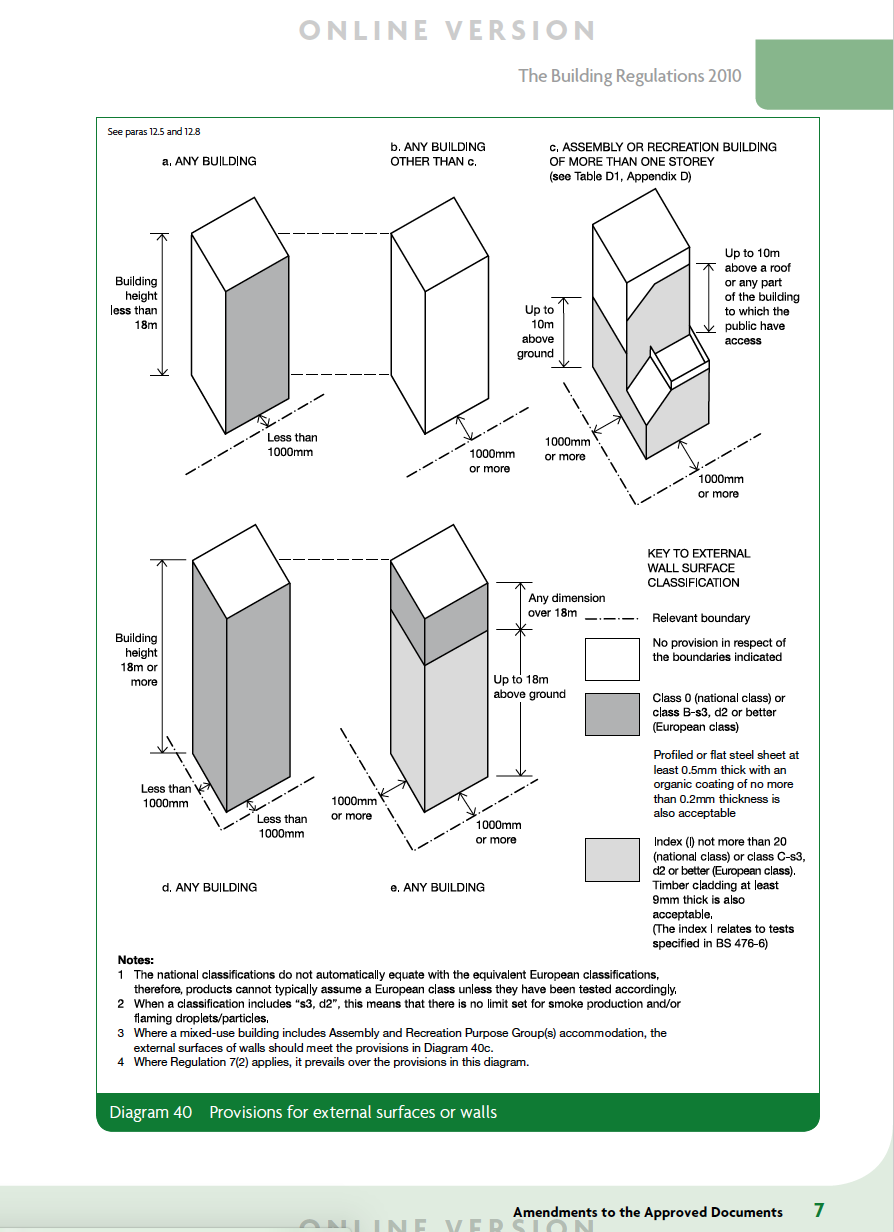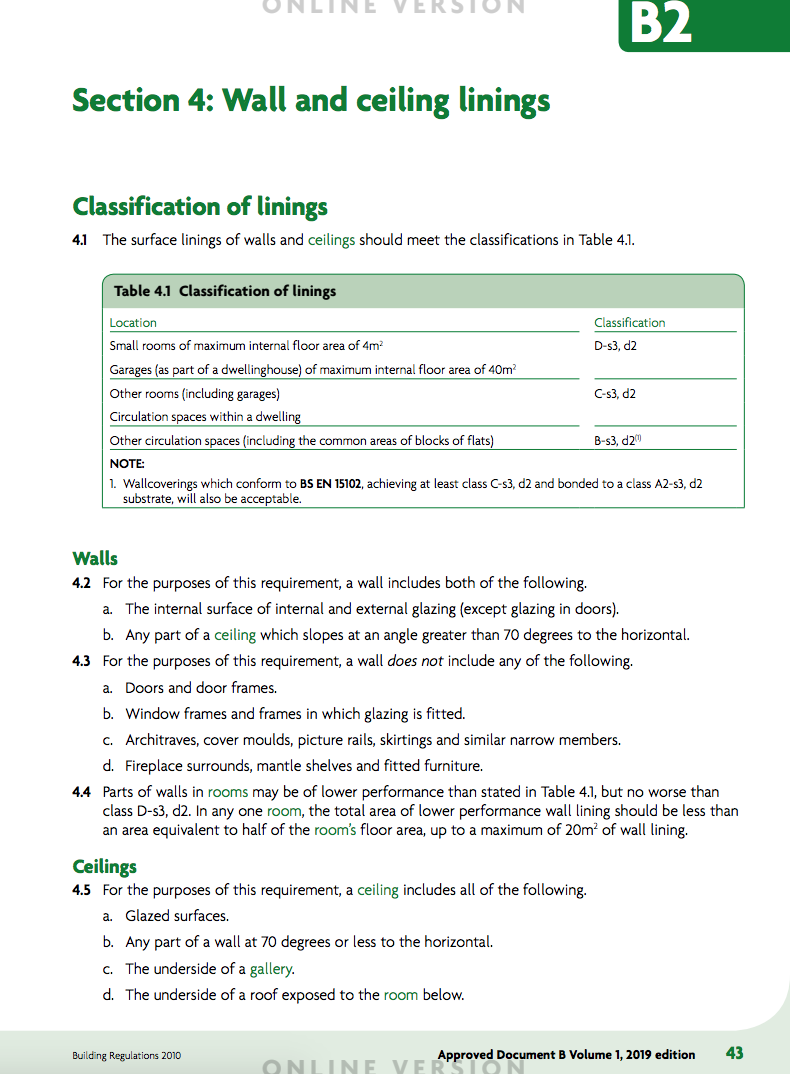Approved Document B, Fire safety, 2019
Building standards have been under review following the Grenfell Tower fire. Although this was not a timber building and did not have timber cladding, the use of combustible construction materials is coming under increased scrutiny.
Approved Document B, Fire safety, 2019 has now been published for use in England.
The amended Regulation 7(2) states that ‘building work shall be carried out so that materials which become part of an external wall, or specified attachment, of a relevant building are of European Classification A2-s1 d0, or Class A1 (non-combustible)… where a ‘relevant building’ means a building with a storey (not including roof-top plant areas or any storey consisting exclusively of plant rooms) at least 18m above ground level and which:
Contains one or more dwellings
Contains an institution
Contains a room for residential purposes (excluding any room in a hotel or boarding house).
This requirement does not apply to doors, door frames or window frames.
The government interprets relevant buildings as including (where there is a storey at least 18 metres above ground level): ‘Residential flats/rooms (excluding any room in a hotel, hostel or boarding house), hospitals, care homes, sheltered housing, dormitories in boarding schools, student accommodation and schools which are built as part of the government’s centrally delivered build programmes’.

In cases other than relevant buildings (see above), the advice for external cladding – for our purposes, timber cladding, is essentially as follows:
For any building other than a recreation or assembly building of 18m in height or lower:
- No provision
- Unless any wall is less than 1000 mm from a boundary, when the cladding must be FR treated as a minimum to Euroclass B-s3, d2
For any building other than a recreation or assembly building over 18m in height:
- Cladding for the lower 18m of the building must be FR treated as a minimum to Euroclass C-s3, d2
- Cladding above 18m must be FR treated as a minimum to Euroclass B-s3, d2
- Unless any wall is less than 1000 mm from a boundary, when the cladding of the entire wall must be FR treated as a minimum to Euroclass B-s3, d2
For an assembly or recreation building of more than one storey:
- Cladding up to 10 m above the ground, or 10 m above any part of the building to which the public have access must be FR treated as a minimum to Euroclass C-s3, d2
- Unless any wall is less than 1000 mm from a boundary, when the cladding of the entire wall must be FR treated as a minimum to Euroclass B-s3, d2
Untreated timber cladding meets Euroclass D. Timber cladding treated to Euroclass B and C is widely available from specialist timber merchants.
Industry guidance
Building Regulations guidance does not always stipulate a particular reaction to fire performance for cladding and/or balconies on buildings where the upper floor level is less than 18m above ground. In such circumstances, so as to provide consistency, insurance and peace of mind against unforeseen circumstances, an independent, professional fire risk assessment that takes into account the building design, use, materials and location is essential at the project design stage.
Such an assessment may demonstrate that, by means of careful design and component specification, flame retardant treatment is unnecessary in the particular circumstances. However, following recent reviews and from industry feedback on new projects, the Confederation of Timber Industries (CTI) recommends that all such timber-based cladding and balcony components should be treated using a quality assured factory-applied flame retardant to Euroclass B, unless shown not to be necessary by an appropriate risk assessment process.
Interior Cladding
Broadly speaking, interior cladding should be treated to Euroclass C-s3, d2. See full guidance in Approved Document B for details.

